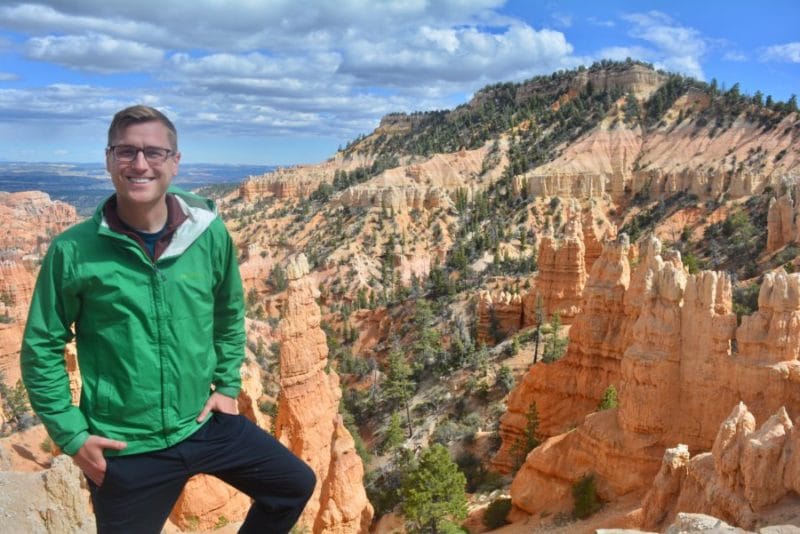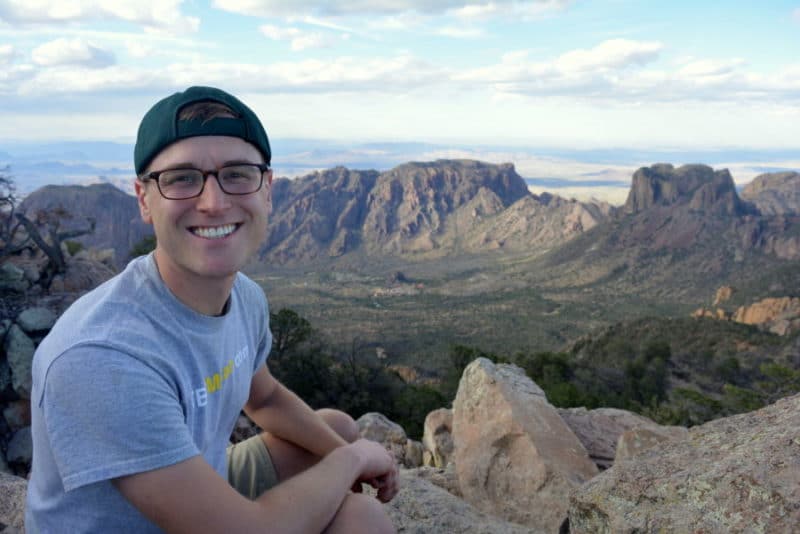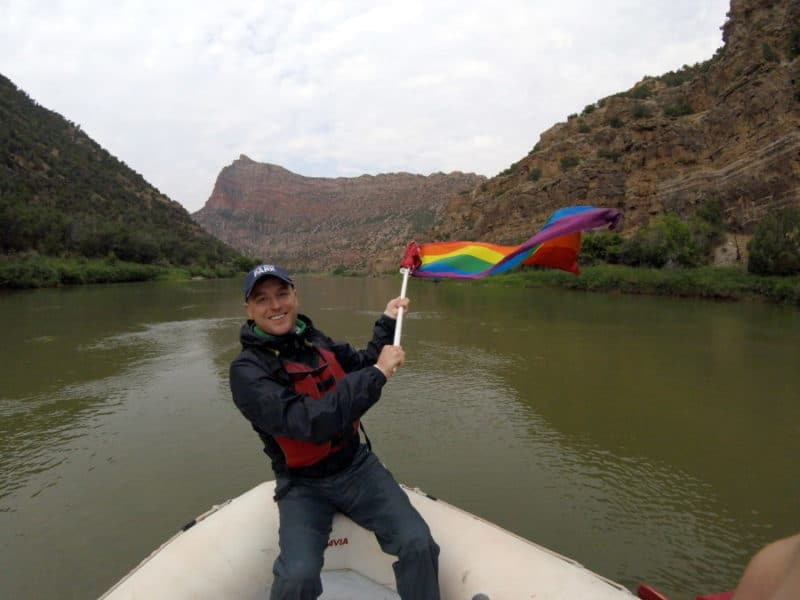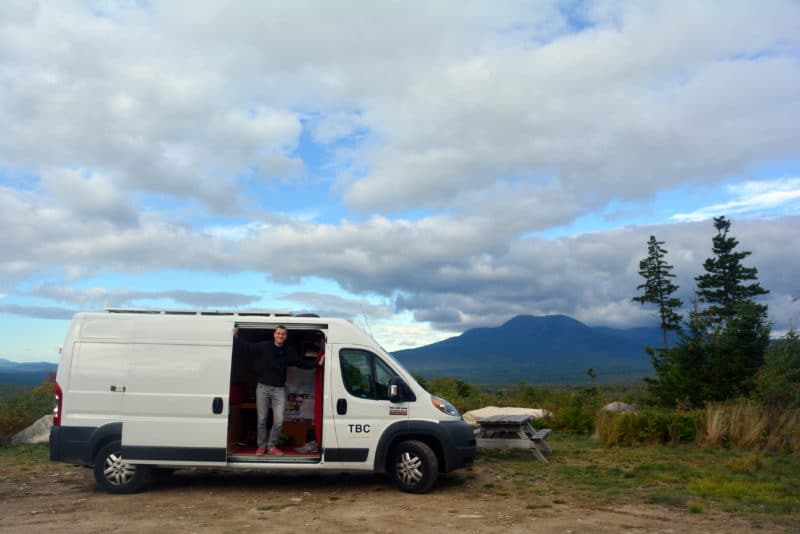How One LGBT Traveler Is Making National Parks More Inclusive
America’s National Parks are a thing of beauty — and LGBT adventure traveler Mikah Meyer is on a mission to see all 417 of them!
Honored as a 2016 MTV “Social Media Warrior,” and called a “Sexy Travel Guru” by GayCities, this road trip expert has been featured on NPR, Upworthy, the Guardian, and news outlets from Nebraska to New Zealand, for the double-world record, three-year national parks journey he’s currently undertaking.
A specialist on LGBT inclusion and America’s public lands, Meyer has spoken around the world about living a life that honors your deepest aspirations. Seen on Instagram exploring with his signature rainbow flag, Mikah chronicles his adventures on his website, MikahMeyer.com.
For Jessie on a Journey’s Inspirational Traveler series, we caught up with Mikah to dive deeper into why he set out on this quest and how his trip is helping to transform the way people view LGBT adventure travel, especially in national parks.




1) What encouraged you to pursue this goal of visiting the entire U.S. National Park system?
When I was 19, I lost my father to cancer. He was 58, and it taught me an important lesson about tomorrow not being guaranteed, in needing to pursue my passions ASAP. My dad was a big fan of road trips, and watching him lose out on any future journeys, I decided to do one road trip every year around the anniversary of his death to honor him. Throughout my 20s, I met so many people who seemed to think they were guaranteed to live to 80, that I committed to doing something big—something crazy—at age at 30, to help share this carpe diem message with the world. That crazy thing is that on the 11th anniversary of my father’s passing (April 29, 2016), I moved my life into a white, windowless cargo van, and have been living in it for the past 22 months while setting a world record as the youngest person to visit all 417 U.S. National Park Service sites.
Mikah Meyer, an LGBT travel expert, is exploring America’s National Park system.
2) Before this goal, what was your connection to our National Parks and outdoor adventures in general?
I’ve always been a lover of outdoor adventures; but contrary to popular assumption, did not visit a lot of national parks growing up. My dad was a pastor, so he worked on the weekends, which meant we couldn’t do the typical getaways. Prior to this journey, I’d only been to 10 National Parks. And yes, I’m visiting those 10 again on this project to all 417.3) How did you plan out this goal?
I spent my 20s saving funds to launch this project, and two years—from ages 28-30—planning like a full-time job. The logistics have been the most intense I’ve ever experienced, because on any given day I’m sharing about yesterday’s park, experiencing today’s park, and planning for tomorrow’s park. People say they’d love to do what I’m doing and I always tell them “No, don’t do it like this!” The constant logistical work, and my needing to always be fundraising to stay on the road, make it one of the most stressful things I’ve ever done. It’s far better to visit these places when you can be on an actual vacation and be in the moment—not having to answer emails from your phone while hiking up Angel’s Landing. Organizational needs aside, my Vanny McVanface home doesn’t have heating or A/C when it’s not running, so to keep myself from freezing/overheating to death, my general itinerary is ‘summers up north, winters down south.’ That also works really well considering many of the parks are only open seasonally, or are considerably better experienced during certain times of the year. Twenty-two months in, that strategy has paid off pretty well, with the exception of Devils Postpile National Monument, which is only open two months every year and is requiring me to fly back from Alaska so I can visit during that mid-July to mid-September window.
Mikah Meyer is working with the U.S. National Park Service to better promote our national parks to Millennials and the LGBT community.
4) Tell us how you mapped out your route.
The route planning is basically a giant chess game, with each season utilized in one region and park visit affecting all the future ones. With 293 parks done, that chess game is starting to get smaller; but, I also put off the most challenging parks until the end. These include Alaska, American Samoa, Hawaii and Guam, so stay tuned for some epic—and epically reached—parks!5) Did you contact the U.S. National Park Service about your goal?
They contacted me! When I started this project, they read the opening coverage in the Washington Post and reached out to ask if I could help them encourage Millennials and the LGBT community to visit. These two demographics — along with racial minorities — were determined by their Centennial Study as underserved within the National Park System. I’m a volunteer for the park system, blogging and using social media to help share all 417 national parks and reach those underserved audiences.6) From your perspective as an LGBT adventure traveler, how is the LGBT sector represented in the adventure tourism space?
They aren’t. Well, that’s both true and a lie. There are tons of LGBT people who love the outdoors and are active, but if you look at outdoor marketing, you would think the only people who hike are straight white people. Even in an age where companies like Mormon-owned Marriott have an entire #LoveTravels campaign reaching out to the LGBT community and sponsoring pride festivals, the outdoor industry has yet to have their first ever Pride Month ad — like those so many companies create annually during the month of June. It’s pretty surprising no one is chasing this “gay dollar,” considering LGBT people are known for gentrifying neighborhoods (trendsetters), gays have a stereotypically health/image/fashion obsessed culture, and have also been noted for having high discretionary income due to lots of double-income-no-kids couples. If my 51,000 primarily LGBT Instagram followers are any proof, we’re out there. You just don’t see us portrayed in typical outdoorsy scenes.
You can follow along Mikah Meyer’s National Parks journey via his website and Instagram account.
7) What pros and cons do LGBT adventure travelers often face within this travel sector? Are there certain factors that LGBT travelers have to keep in mind?
The same factors LGBT travelers face anywhere they travel:- Is it safe to tell people this part of themselves?
- Can they introduce their significant other as such, or do they need to lie and say it’s their sister/brother/cousin for their safety?
- Depending on the country, if their spouse is injured, are they legally allowed to visit them in the hospital or make their health decisions should they be unconscious?
8) What parks have surprised you the most, so far?
Any of the non-59 National Parks — the other 358 National Park Service sites — that are naturally spectacular. During the 2016 NPS Centennial, five expeditions completed visiting “all 59 National Parks,” which is often advertised as a goal any park lover should have. But from my experience — only 293 parks into the 417 sites — there are many of those 358 other sites that are better than the 59 National Parks. So once my journey to all 417 is complete, I’ll release the “Mikah Meyer 59,” listing the 59 Best Sites in the National Park Service. Stay tuned to http://www.mikahmeyer.com for the guidebook.
Meet Mikah Meyer’s “home” during his National Parks trip. Its name is “Vanny McVanface.”

Hi, I’m Jessie on a journey!
I'm a conscious solo traveler on a mission to take you beyond the guidebook to inspire you to live your best life through travel. Come join me!
Want to live your best life through travel?
Subscribe for FREE access to my library of fun blogging worksheets and learn how to get paid to travel more!
Turn Your Travel Blog Into A Profitable Business
Subscribe to my email list to snag instant access to my library of workbooks, checklists, tutorials and other resources to help you earn more money -- and have more fun -- blogging. Oh, and it's totally FREE! :) // Privacy Policy.